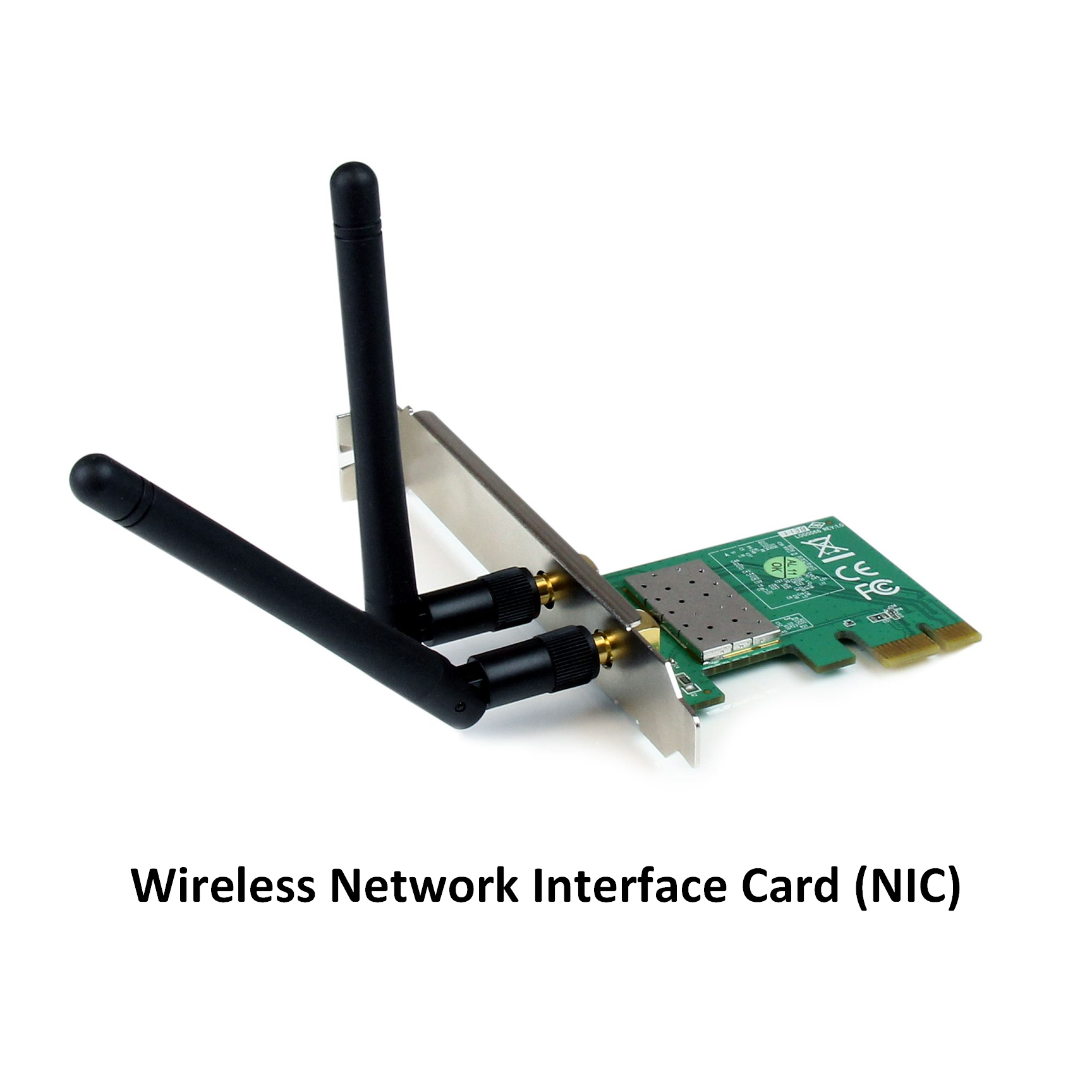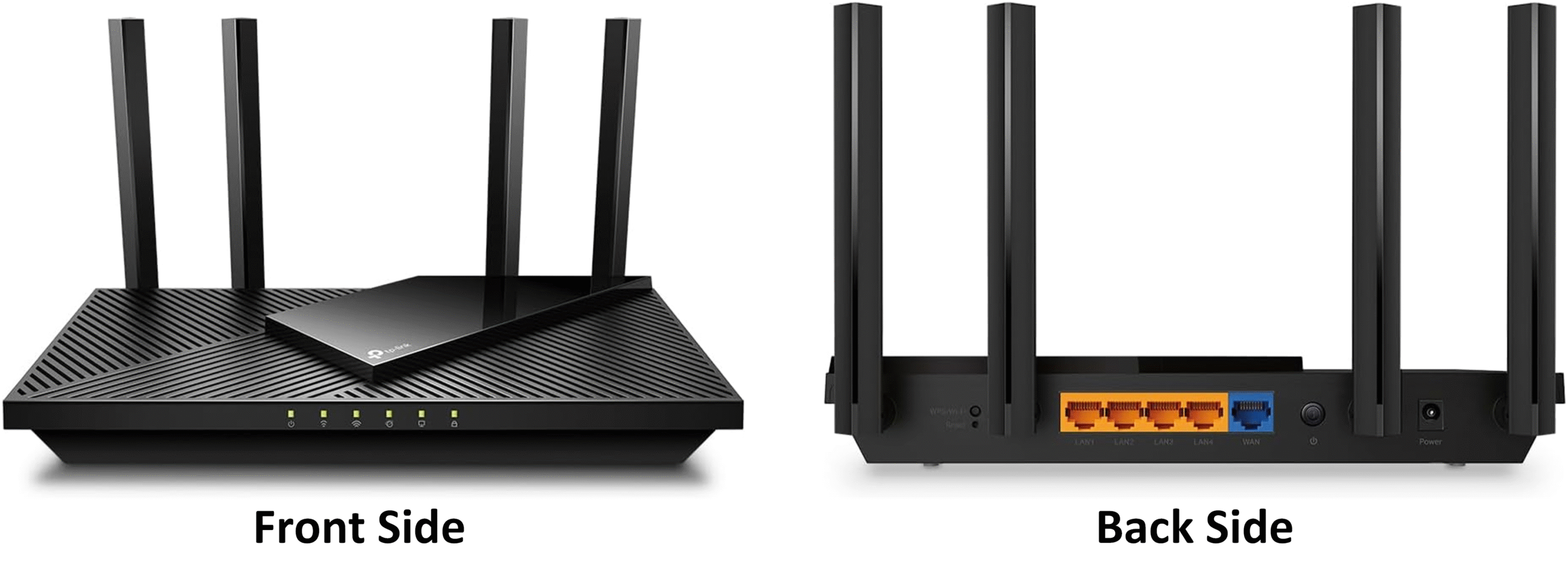In this lesson, I’m going to show you the main WLAN components that make our wireless networks work every day.
To communicate wirelessly, your device needs a Wireless Network Interface Card (NIC). Most modern laptops, smartphones, and tablets have built-in wireless NICs that include a radio transmitter and receiver.
But what if your device doesn’t have a built-in NIC? Don’t worry, you can use a USB wireless adapter that adds wireless capabilities in seconds.

Figure 1 – Wireless Network Interface Card (NIC)
Did you know ? Many wireless NICs have hidden antennas. That’s why you don’t see any visible antenna on your smartphone or laptop, but it’s still connecting seamlessly to Wi-Fi.
Answer the question below
When you set up Wi-Fi at home, the heart of your network is the wireless router. It does more than just provide Wi-Fi—it’s a multi-purpose device.

Figure 2 – Wireless Home Router (Front and Back View)
Here, for example, it's a TP-Link AX1800 wireless router.
Functions of a Wireless Router
Access Point (AP): Provides Wi-Fi connectivity using one standard from the 802.11a/b/g/n/ac/ax family.
Switch: Offers Ethernet ports for wired connections.
Router: Acts as the default gateway, allowing your devices to connect to the internet.
This little device broadcasts a Service Set Identifier (SSID) the name of your Wi-Fi network so your devices can discover and connect to it.
⚠️ If you have a big house, you may have "dead zones" where you're too far away from your wireless router to connect to the Wi-Fi. You may need to extend your wireless coverage by using a Wi-Fi range extender. Extenders repeat the router’s signal to cover a wider area, but they’re not the most efficient solution more on that soon!
Answer the question below
What device gives you Wi-Fi at home?
An Access Point (AP) extends your Wi-Fi network and allows wireless devices to connect seamlessly. While home routers have built-in APs, professional setups like offices or enterprise campuses use dedicated APs to ensure optimal coverage.
40 % Complete: you’re making great progress
Unlock the rest of this lesson
If you’d like to continue your CCNA journey, simply create your free account.
Access all CCNA lessons
Practice with hands-on labs
Train with Practice exams and Quizzes
Progress tracking in your dashboard
Made by network engineers - CCNP certified
learners globally
WLAN Components
Wireless networking relies on key components such as NICs, routers, access points, and controllers to provide reliable connectivity. In this lesson, you’ll explore how each element works together, from home setups to enterprise-grade deployments.